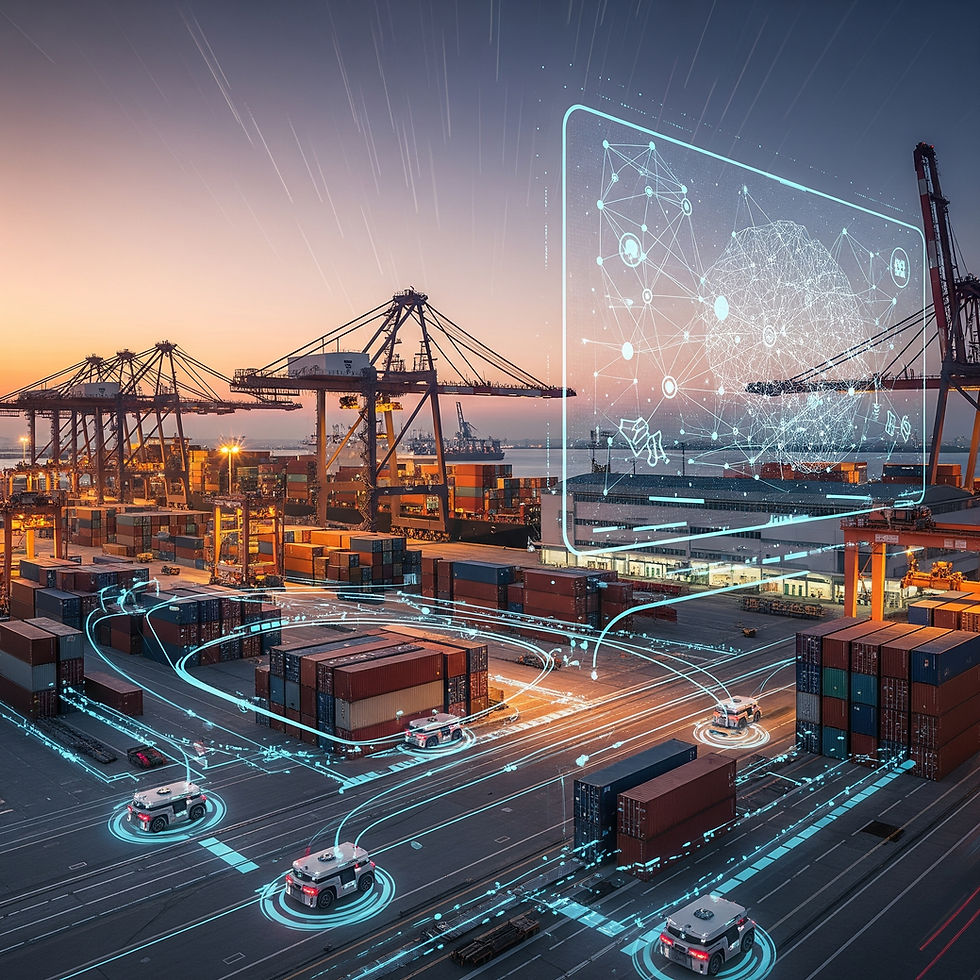Data Integrity Before AI: Why Clean Data Powers Smarter Logistics
- Chris Ruddick
- Sep 8
- 3 min read
Updated: Sep 18
Artificial Intelligence (AI) is everywhere in today’s tech headlines. From predictive analytics to autonomous planning, AI promises to revolutionize supply chain and logistics operations. But there’s a foundational truth most companies overlook: AI is only as good as the data it’s fed.
This article explores why data integrity is the essential first step before introducing AI into logistics workflows, and how automation, and not AI, should be your first investment.

Why “Garbage In, Garbage Out” Still Matters
The phrase “garbage in, garbage out” (GIGO) is more relevant than ever in the AI era. If your systems are populated with inconsistent, duplicate, or incomplete data, no machine learning model or intelligent agent can deliver accurate results.
In fact, a study by Gartner found that poor data quality costs organizations an average of $12.9 million per year.
What Is Data Integrity in Logistics?
Data integrity refers to the accuracy, consistency, and reliability of data throughout its lifecycle. In supply chain and logistics, this includes:
Standardized formats for SKU and carrier codes
Timely and complete status updates (e.g., order, shipment, and inventory)
Unified reference IDs across systems (WMS, TMS, ERP, etc.)
Removal of manual entry errors and duplicates
Without these standards in place, logistics systems struggle to communicate and AI systems can’t learn.
AI Needs a Strong Foundation
Before AI can provide predictive analytics or intelligent decision-making, it needs access to:
Normalized data schemas
Historical context with complete timelines
Consistent identifiers across systems
But most logistics stacks are composed of fragmented systems, spreadsheets, and manual workarounds. In this environment, AI efforts are likely to fail or underperform.
“You can't apply intelligence to chaos. Data integrity is the foundation of any successful AI initiative.” — Supply Chain Quarterly, 2024
Why Workflow Automation Comes First
While AI gets the spotlight, automation is the backstage crew ensuring the stage is clean, structured, and ready.
Our SaaS platform, built for the supply chain and logistics sector, is a workflow automation platform like Zapier, tailored specifically to the complex needs of the industry.
We help businesses:
Automate data transfers between systems (TMS, WMS, ERP, etc.)
Normalize inputs from EDI, APIs, spreadsheets, and portals
Eliminate manual entry and reconciliation work
Validate and enrich data to maintain consistency and completeness
These automations build the clean data pipelines that AI depends on.
Real-World Example: Before You Predict, You Clean
Imagine a 3PL wants to use AI to predict delivery delays. But shipment status updates come in late, with inconsistent timestamps or missing milestone events.
No AI model can fill those gaps reliably.
By contrast, a workflow automation platform can ensure:
Event data is ingested in real time
Timestamps are reformatted consistently
Carrier milestones are validated against expected SLAs
Only then is the data ready for intelligent modeling.
Don’t Start with AI. Start with Automation.
If you’re building toward AI maturity in your supply chain, start by automating your workflows and improving data hygiene.
Key Benefits of Automation Before AI:
Lower costs of error correction
Faster onboarding of partners and systems
More reliable analytics
Scalable infrastructure for future AI adoption
What are the next steps?
Ready to future-proof your logistics operations?
Start with automation that builds clean, consistent data pipelines, so you're ready for AI when it matters.
Book a Demo to see how our workflow automation platform supports logistics transformation from the ground up.
Subscribe to Our Newsletter below for insights on supply chain automation, AI readiness, and operational excellence.
Final Thoughts
AI can optimize logistics – but not without clean data. By focusing first on data integrity through automation, you’ll set the stage for smarter, more reliable outcomes when AI enters the picture.



Comments